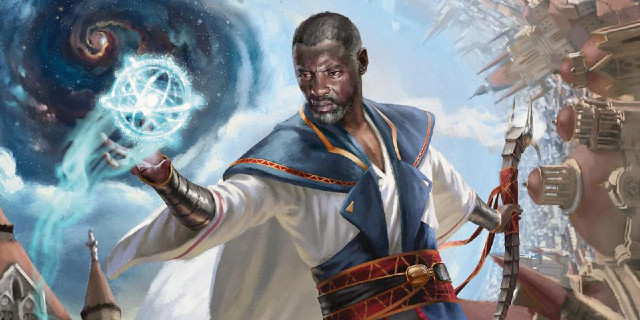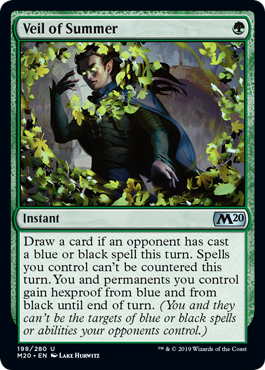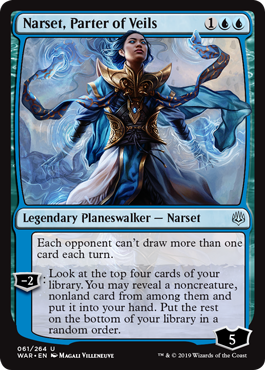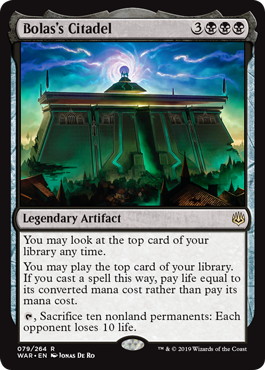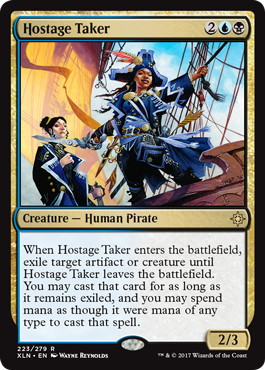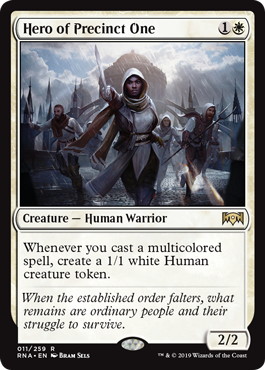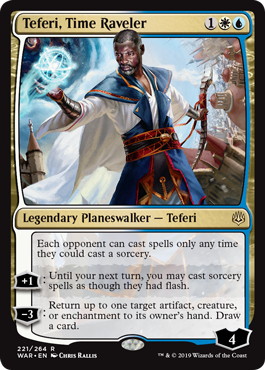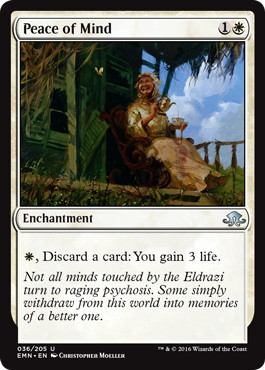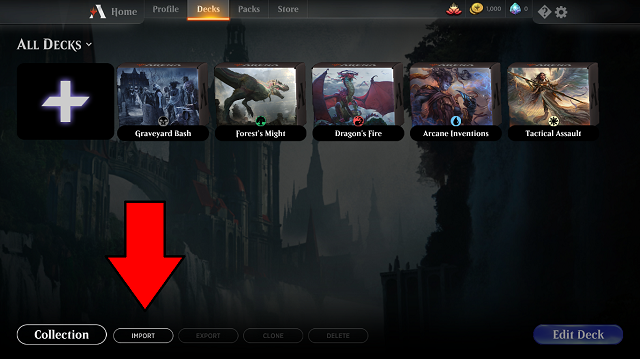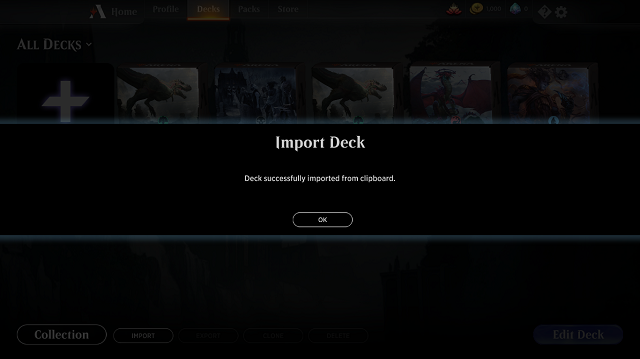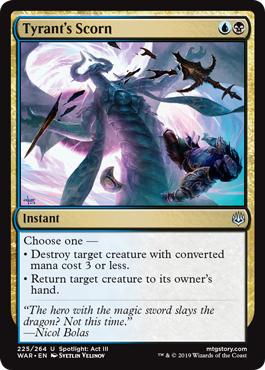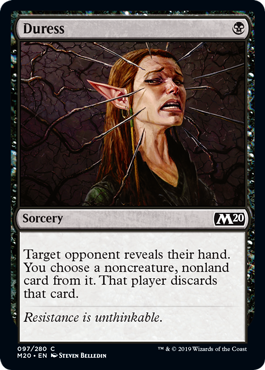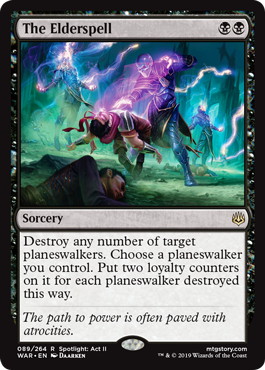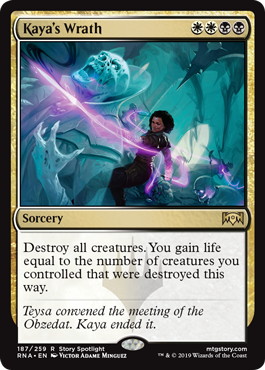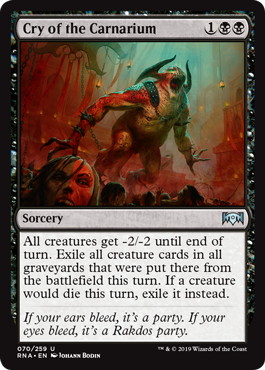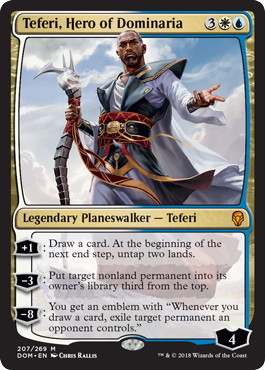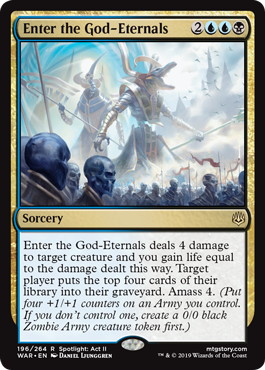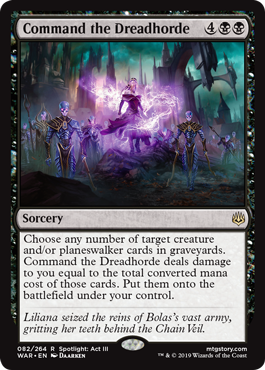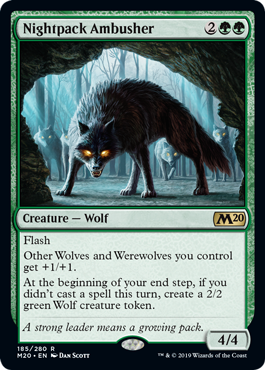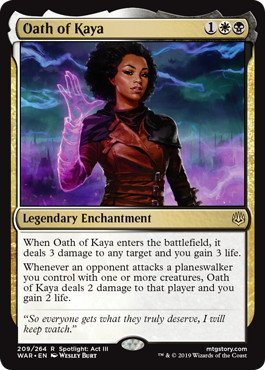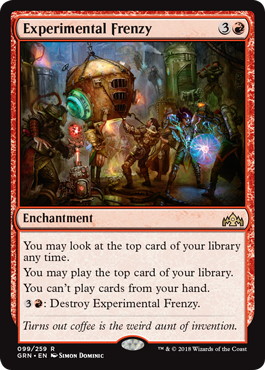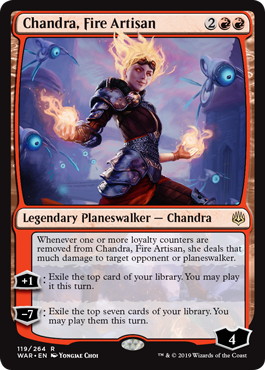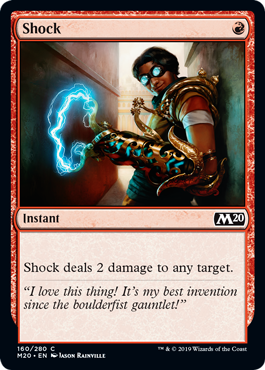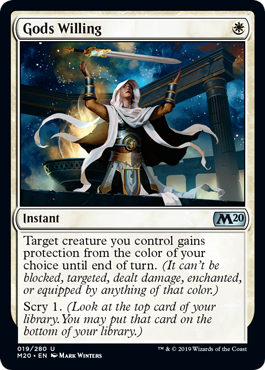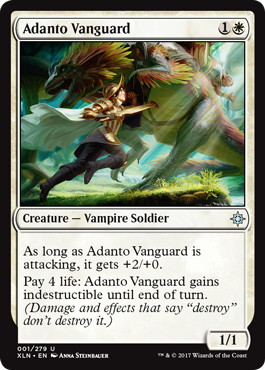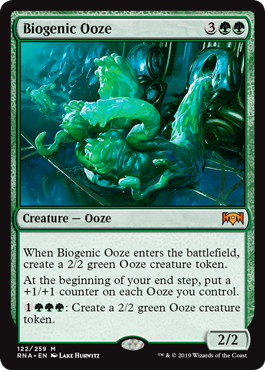Introduction
On July 13th, I won a Magic Online Championship Series Playoff tournament.
MAGIC ONLINE CHAMPIONSHIPS HERE I COME!!! 🏆Had a pretty good chance of making it through the leaderboard anyway, but this is nice so I don't have to stress it anymore 😛 Copied @BraunDuinIt 's Esper list from earlier this week and it worked perfectly. BBD you're my Hero! pic.twitter.com/pxZtLYzVRS
— Matti Kuisma (@kuismatti) July 13, 2019
For those who don’t know, it’s as prestigious as Magic Online tournaments come. First, you have to grind a lot of tournaments to be able to join one of the MOCS Preliminaries, and then you have to do very well in one of those to qualify for the MOCS Playoffs. This means that the level of competition is always very high, as you have to beat a lot of talented, hard-working players just to get a chance to play in the event. The winner of the Playoff gets a place in The Magic Online Championships, a 24-player invitational with $50.000 as the main prize.
The Reason Why I Chose Esper Hero
The format of the tournament was Standard. With the introduction of Core Set 2020, many new decks have popped up in the format. The set has a bunch of incredibly powerful cards, like 《Risen Reef》 and 《Nightpack Ambusher》.
Yet, I chose to play a deck that didn’t play any of the new cards, Esper Hero. I know, technically it has 2 《Temple of Silence》s in it, but those aren’t even good in the deck, so they don’t count. To make matters worse, they printed a one mana 《Cryptic Command》 for green decks to crush you with – 《Veil of Summer》. So, why did I choose to play it?
First of all, in new Standard formats it’s often a good idea to play a well-refined archetype even when it might not be the most intrinsically powerful one. Esper Hero is a very solid deck that doesn’t have any major weaknesses, and it has already been tuned for months to find the best core of the archetype. This is also why linear aggro decks tend to do well in the first couple of weeks of a new format, as it is much easier to find the best core of those decks, while it’s much harder to find the best cores of more synergy-based archetypes.
Second, I think many of the cards in the deck just line up pretty well against the format. 《Hostage Taker》 in particular is in a very good spot right now, as most decks are full of creatures but don’t have many ways to kill it. 《Hero of Precinct One》 is also still powerful. For example, landing a turn 2 Hero on the play can just win the game by itself against one of the new decks, Simic Flash. I’m fine with them countering all my consequent spells if I get to amass a snowballing army of Human tokens with the Hero.
《Teferi, Time Raveler》 is another killer, as it single-handedly destroys decks based on 《Feather, the Redeemed》. They are fairly light on threats, and when Teferi shuts down their protection spells it’s easy to pick off the ones they have. You can often even bounce a creature when Teferi comes into play and then untap with it afterwards.
Teferi is also the only reason this deck doesn’t crumble to pieces against 《Veil of Summer》. A one mana cantripping counterspell for discard, removal and counterspells is still insanely good against this deck, but Teferi gives you a fighting chance thanks to its static ability. If you have a Teferi in play, try to play your black and blue cards on your own turn, so they don’t even get to cycle it (although it’s not the end of the world if they do).
Last, but not least, I also wanted to play the deck for comfort reasons. I’m a strong proponent of playing what you know, especially when you have limited time to test. Mythic Championship IV in Barcelona is approaching soon, and most of my time has been spent testing Modern and Modern Horizons draft. Well, not even on Modern really, mostly just drafting Modern Horizons because it is one of my all-time favorite formats.
Anyway, like I’ve written before, the less time you have, the more focused your testing process should be. In the end, I decided to go for Hero since I had already played it a bunch before Core Set 2020 came out. I simply felt like I would be more proficient with that archetype than my backup option, Simic Nexus with 《Risen Reef》s. The current 《Risen Reef》 Nexus lists are also somewhat unrefined. Over the next couple of months, I expect that to change and it might very easily become a better deck than Hero. It just takes some work to get there, whereas Hero has essentially reached its peak already.
The list I went with was this:
- Matti Kuisma
- – Esper Hero
- Standard MOCS Playoff on 13th July
- (Champion)
4 《Godless Shrine》
4 《Hallowed Fountain》
4 《Watery Grave》
4 《Drowned Catacomb》
4 《Glacial Fortress》
3 《Isolated Chapel》
2 《Temple of Silence》
-Land (26)- 4 《Hero of Precinct One》
3 《Elite Guardmage》
3 《Hostage Taker》
-Creature (10)-
3 《Tyrant’s Scorn》
2 《Despark》
1 《Command the Dreadhorde》
3 《Oath of Kaya》
1 《Bolas’s Citadel》
4 《Teferi, Time Raveler》
2 《Narset, Parter of Veils》
4 《Teferi, Hero of Dominaria》
-Spell (24)-
2 《Dovin’s Veto》
2 《The Elderspell》
2 《Cry of the Carnarium》
2 《Kaya’s Wrath》
2 《Enter the God-Eternals》
1 《Despark》
1 《Bolas’s Citadel》
1 《Narset, Parter of Veils》
-Sideboard (15)-
Savvy readers might notice that these are the exact same 75 cards that my personal Hero, Brian Braun-Duin, used to win the Fandom Legends tournament a couple of days earlier. While testing the list, I didn’t feel the need to make any changes, which is quite unusual for me. I believe that because people have different playstyles and opinions on what things matter the most in any given matchup, optimal lists of decks are also different for different players. For two perfect players they wouldn’t be, but for two regular human beings they usually are.
Sideboard Guide
Esper Hero Mirror

Against Esper Hero Mirror
On the draw, I would take out one more 《Teferi, Time Raveler》 and leave in one more 《Tyrant’s Scorn》. It’s also reasonable to have something like a 《Kaya’s Wrath》 or 《Cry of the Carnarium》 instead of the 《Tyrant’s Scorn》s. They are quite clunky, but they also let you have a way to get back into the game against a snowballing Hero.
《Bolas’s Citadel》 is probably your best card here. As long as you can keep the Hero in check, your life total shouldn’t be under much pressure and a resolved Citadel should bury the opponent in card advantage quite quickly. It’s worth noting that the value of resolving a Citadel is higher on a turn where you have not played a land yet. If you play it right away on turn 6 and find a land directly on top, you can get left behind on tempo and your Citadel can get bounced with one of the Teferis without having had an impact. It’s often better to play something else on that turn and wait with the Citadel until the next one, so you are more likely to be able to cast multiple spells from it immediately.
Jund Dinosaurs

Against Jund Dinosaurs
The sideboarding here is fairly straightforward. 《Narset, Parter of Veils》 is a bit too slow and its static doesn’t do anything against them, so I prefer the more expensive card advantage engines like 《Command the Dreadhorde》 and 《Bolas’s Citadel》 that have a more immediate impact on the game, especially when the opponent is not that great at pressuring your life total. 《Elite Guardmage》 doesn’t match up very well against their creatures, so it can go on the sidelines as well.
《Kaya’s Wrath》 is phenomenal here and very hard for them to beat without a 《Duress》.
Simic Flash

Against Simic Flash
The plan here is to lower your curve to reduce the effectiveness of their counterspells and tempo plan. 《Despark》 and 《Kaya’s Wrath》 are a bit narrow, but 《Nightpack Ambusher》 is a scary threat that you simply can’t let stay on the battlefield and they often bring in 《Shifting Ceratops》 as well.
This sideboard plan might cut a bit too much top end and it’s possible that it’s better to leave in the 《Bolas’s Citadel》 and/or the 《Command the Dreadhorde》, probably shaving on something like 《Oath of Kaya》. Both heavy hitters should be game over if you can resolve them, but they are also very hard to resolve as they are so expensive. That said, some of the games go quite long, so you might have enough time to do that.
Most lists I have seen have had a maximum of 1 《Veil of Summer》, but I expect that number to increase going forward. My opponent in the MOCS Playoff semi-finals at least had multiples and that should become more common going forward. If possible, try to save your 《Dovin’s Veto》s either for the Veils, or to protect your 《Teferi, Time Raveler》s. The small Teferi is easily your most important card in the matchup.
Mono Red

Against Mono Red (On the Play)

Against Mono Red (On the Draw)
The goal in this matchup is to maximize your answers to 《Experimental Frenzy》 and 《Chandra, Fire Artisan》 without getting rushed over. I always feel bad about leaving in 《Hostage Taker》 in this matchup because it seems so bad on the surface, but the post-board games tend to be long, grindy affairs where the pirate performs better than expected. They usually board out some of their burn, which means your creatures are more likely to survive. It also means that you can be a bit more liberal with your life total and use it as a resource instead of protecting it at all cost.
Because the games go long, I slightly prefer 《Dovin’s Veto》 to 《Duress》, because Veto is live even later in the game. However, on the draw it’s very important to double spell on at least one of the early midgame turns, so I’m willing to risk the occasional dead draw in order to be more mana efficient by having 《Duress》 instead of Veto. Don’t cast your 《Duress》 and 《Thought Erasure》 for no reason in the mid-to-late game, as they can be quite valuable if you draw 《Teferi, Time Raveler》 at some point. Bouncing a Frenzy and then 《Duress》ing it is nice.
Sideboarding in this matchup can differ a lot based on their exact list. For example, in the MOCS Playoff quarterfinals I even brought in 《The Elderspell》 against Butakov’s Mono Red list, because he had so many planeswalkers. 《Tibalt, Rakish Instigator》 and 《Chandra, Fire Artisan》 are quite common, and some of the new lists also have 《Chandra, Acolyte of Flame》. Other Mono Red lists have 《Legion Warboss》es, in which case you want access to some number of 《Cry of the Carnarium》 (especially on the draw). 《Treasure Map》 sees plays in some lists as well, and if you see a Map you should always keep in the maximum number of 《Hostage Taker》s.
It might seem a bit random to board out 1 or 2 《Hero of Precinct One》, but at least in my mind the card is there mostly as a curve filler. While it’s the namesake card of the deck, it’s not great at fighting any of the important battles in this particular matchup. It gets better post-board though, as they frequently board out their 《Shock》s. However, if you do see a 《Shock》 in a post-board game, I would cut more Heroes, especially on the draw.
As you can see, there’s no one-size-fits-all sideboard plan for this matchup. It’s a great example of the limitations of sideboard guides in general. Just remember to pay close attention to the specifics of their deck and hopefully I’ve given you tools to adapt accordingly.
Boros Feather

Against Boros Feather
I have yet to lose this matchup. Like I said earlier in this article, the small Teferi is an absolute house here and it gets even better after sideboarding. In order to put adequate pressure on a possible Teferi, they need to expose themselves to a 《Kaya’s Wrath》. 《Duress》 is also nice here, as it “counters” 《Gods Willing》, protects 《Hostage Taker》 and pre-emptively answers potential planeswalkers.
If you see both 《Legion Warboss》 and 《Adanto Vanguard》, you want to board in a 《Cry of the Carnarium》 or two as well. If you only see one of them but not the other, then I wouldn’t recommend it.
Simic Nexus with Reclamation

Against Simic Nexus with Reclamation
I assume most of this is quite self-explanatory, but the one 《Kaya’s Wrath》 might be a bit of an eyebrow raiser. It’s there mostly for 《Biogenic Ooze》. You cut so much of your creature interaction that an Ooze can sometimes catch you with your pants down, and it’s nice to have a reset button in case that happens. If you want, you can leave in a 《Hostage Taker》 instead. Both can also do some work against 《Nissa, Who Shakes the World》, assuming you can deal with the planeswalker itself as well.
Conclusion
With so many recent changes in Organized Play focusing on MTG Arena instead of live tournaments and Magic Online, it seems likely that this will be the last Magic Online Championships. It has always seemed like a really fun tournament, so I’m very glad I get to experience it before it goes away.
As for Esper Hero, I expect it to stay as one of the better decks in the format and would easily recommend it for any upcoming tournaments. If you have any questions or comments about the deck, you can send them on Twitter, @kuismatti.
Matti (Twitter)


